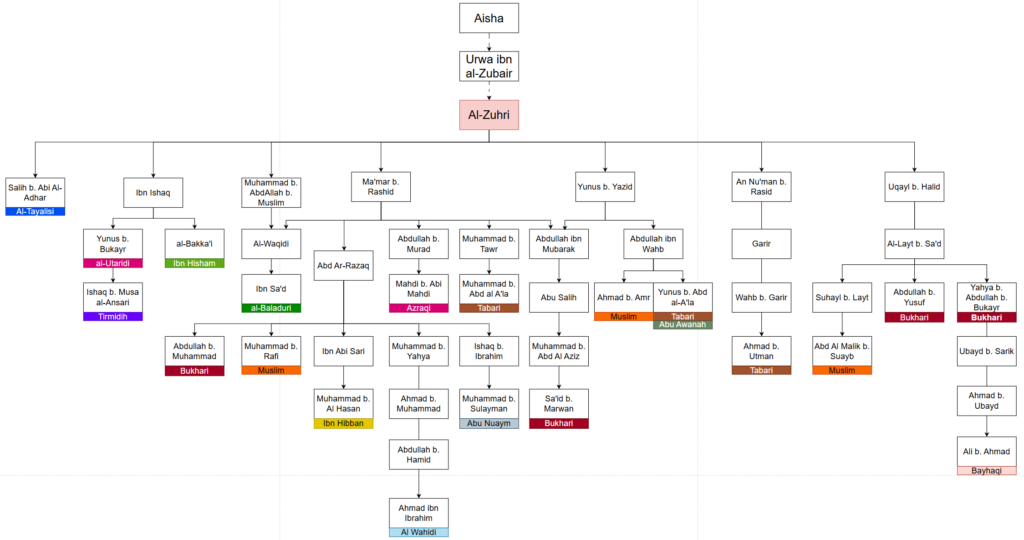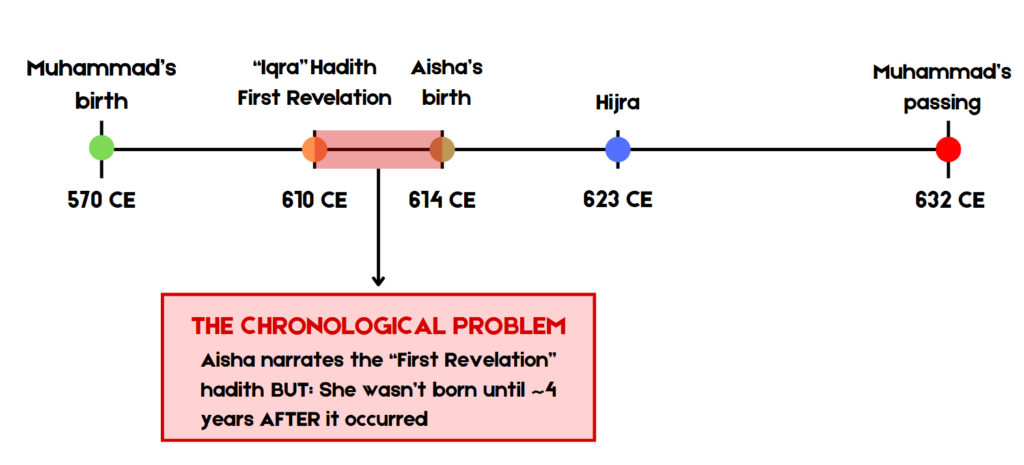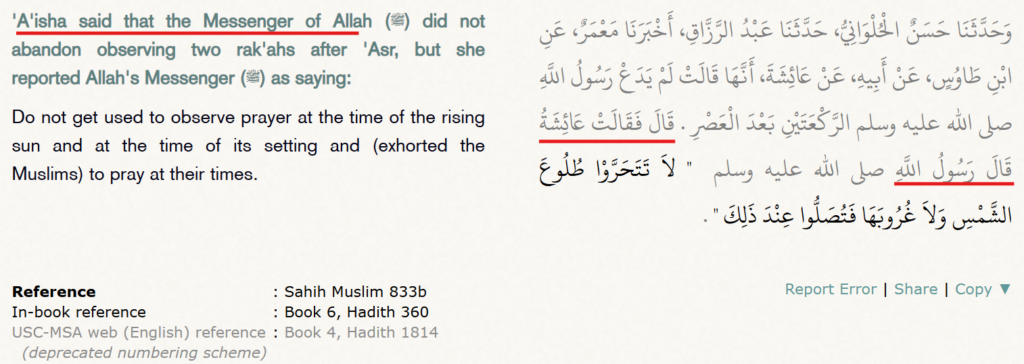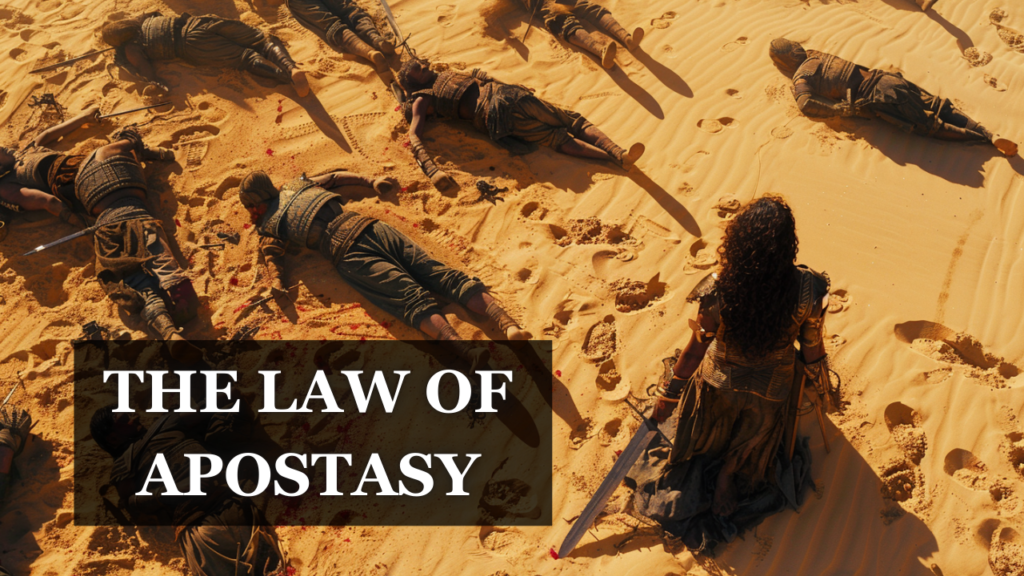When we talk about Bukhari’s authentic compilation, there’s a view that all of his narrations meet the highest standards of verification and authenticity. Yet a closer examination reveals significant methodological inconsistencies that challenge this assumption. One of the most glaring examples involves narrations attributed to Aisha regarding events that occurred before her birth; accounts that Bukhari included without questioning their impossibility or demanding the rigorous source documentation he applied elsewhere.
Transmission History


The hadith in question is the famous narration about “the commencement of Divine Inspiration to God’s Messenger”. Essentially, it’s the story of how Prophet Muhammad received his first revelation from the angel Gabriel in the cave of Hira. This is one of the most foundational narratives in Islamic history, as it describes the very beginning of Muhammad’s prophetic mission.
The hadith, found in Sahih al-Bukhari and elsewhere, is attributed to Aisha and describes the Prophet’s early spiritual experiences, his habit of retreating to the cave of Hira for contemplation, and the dramatic encounter with Gabriel who commanded him to “Read!” (Iqra). The narration goes into considerable detail about the Prophet’s initial fear and confusion, his return to his wife Khadijah, and her reassurance.
The Dilemma
The problematic aspect is that while this chain appears reliable on its surface, it fails to address the fundamental chronological impossibility: how could Aisha provide a firsthand account of events that occurred before her birth? This dilemma becomes even more pronounced when we examine Aisha’s typical narration patterns and compare them to this particular hadith.

In her authenticated narrations, Aisha consistently followed proper attribution protocols when recounting the Prophet’s words or actions. For instance, when narrating directly from the Prophet, she would say “qala rasulullah” (the Messenger of God said) before quoting the Prophet directly, clearly indicating her source. Similarly, when describing the Prophet’s behavior, she would use phrases like “kana rasulullah” (the Messenger of God used to) or “ra’aytu rasulullah” (I saw the Messenger of God), establishing her direct observation or the Prophet as her source.

However, in the first revelation narration, this critical attribution is conspicuously absent. Aisha presents the detailed account—including the Prophet’s internal thoughts, his physical sensations during the encounter with Gabriel, and his private conversations with Khadijah—as if she possessed firsthand knowledge, without any indication of how she acquired this information. She doesn’t say “qala rasulullah” to indicate the Prophet told her this story, nor does she cite any other source.

The absence of source attribution is particularly troubling because Aisha had access to numerous individuals who could have provided this account. She could have received it from her father Abu Bakr, who was the Prophet’s closest companion and likely privy to such intimate details. She might have heard it from Ali ibn Abi Talib, who was present during the early days of Islam, or from other Companions who witnessed the Prophet’s transformation after the first revelation. The Prophet himself could have recounted this experience to her during their marriage. Yet because Aisha never cites her source (not even crediting the Prophet himself!), we are left with a historical puzzle: where exactly did she obtain such detailed knowledge of events that preceded her existence by a few years? This lack of attribution, combined with the chronological impossibility, raises serious questions about the authentication standards applied to this foundational Islamic narrative. The fact that Bukhari included this account without addressing these obvious methodological problems suggests a significant oversight in his otherwise “rigorous compilation process”.

